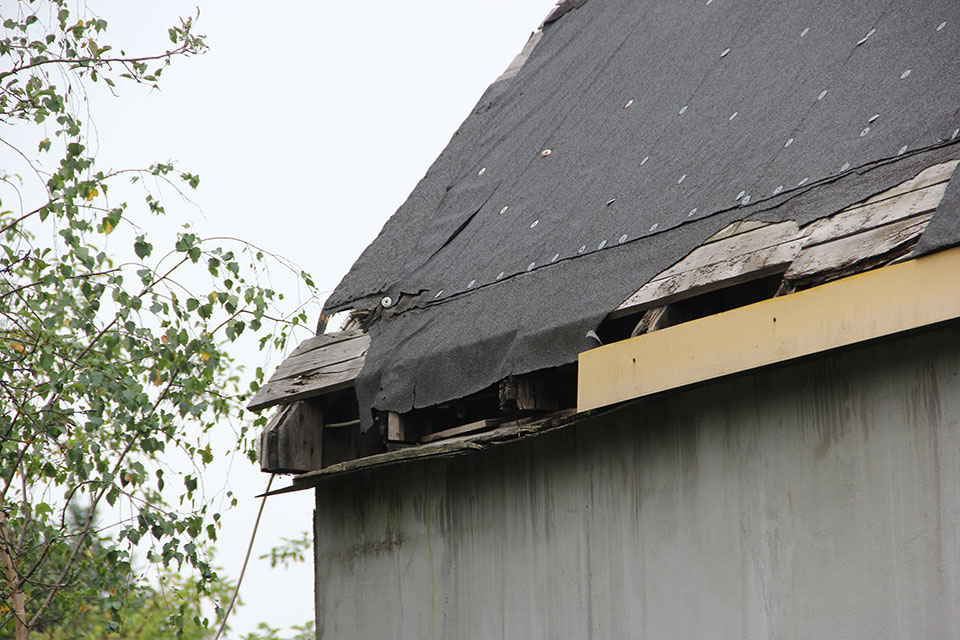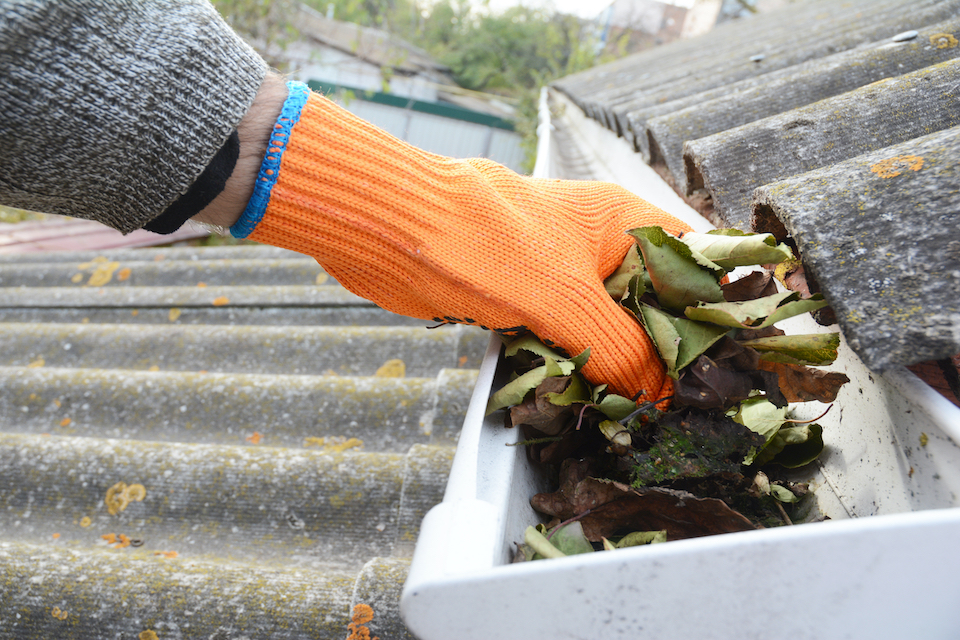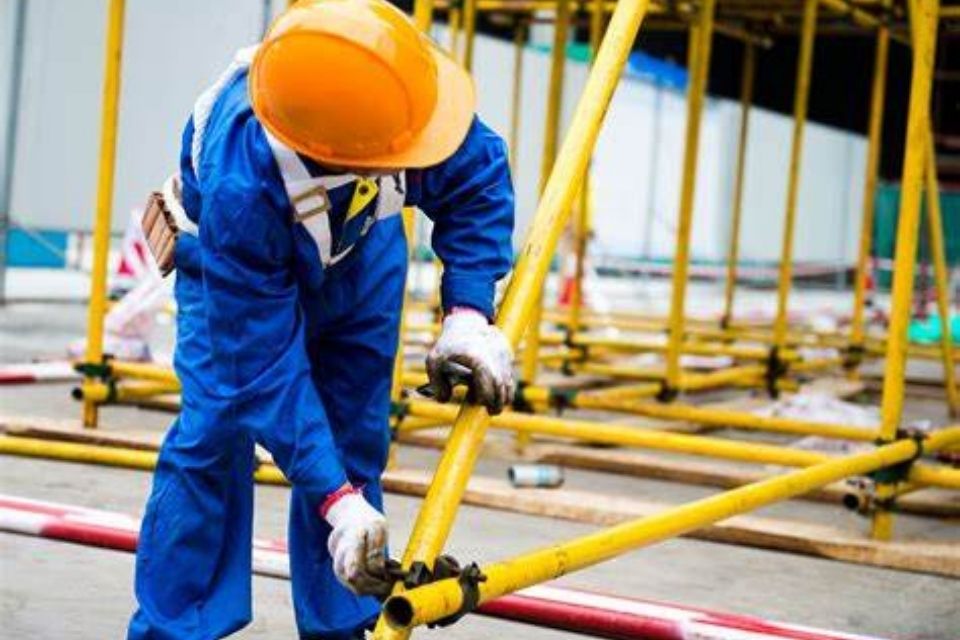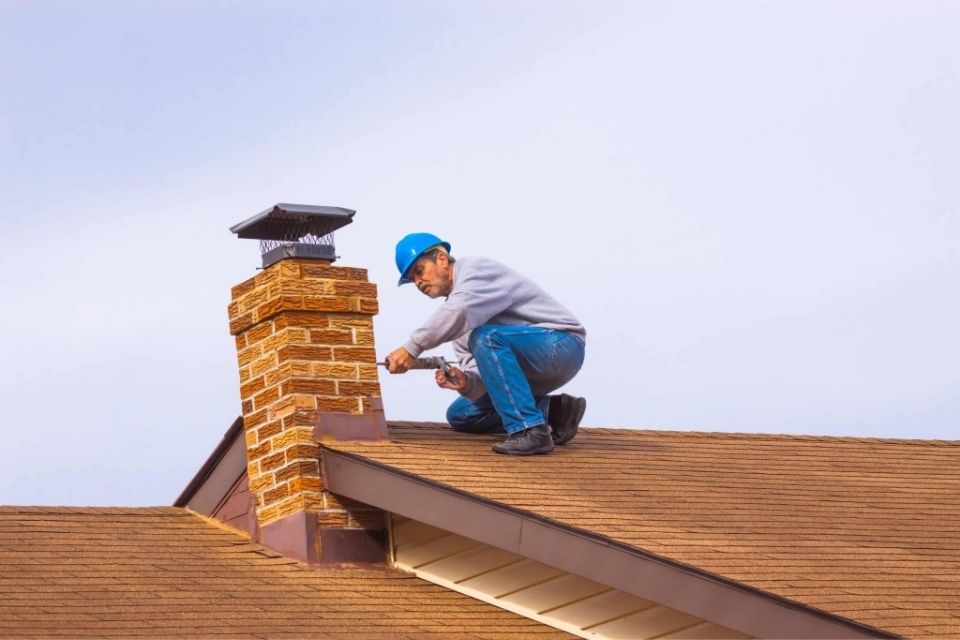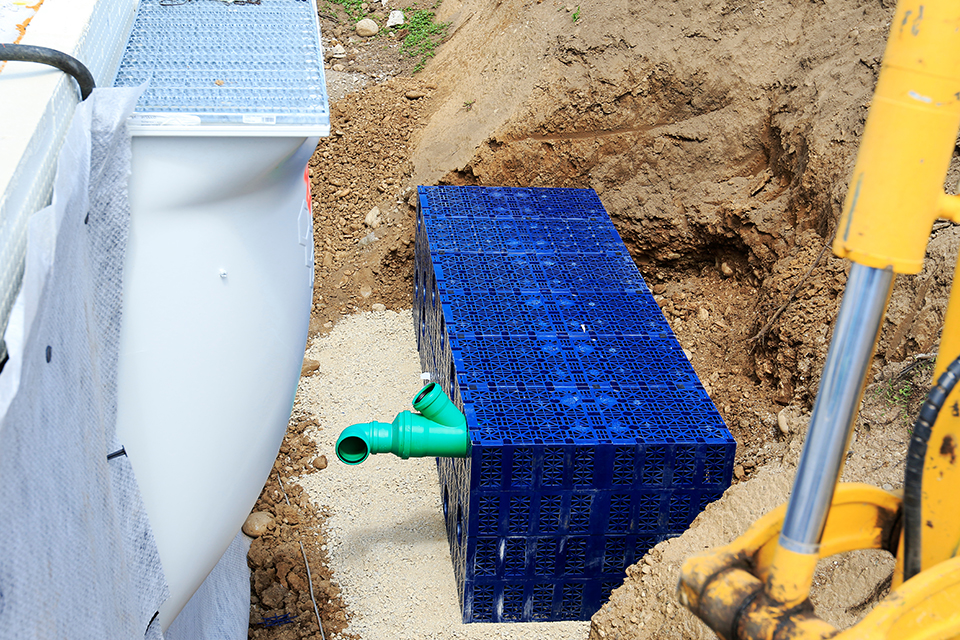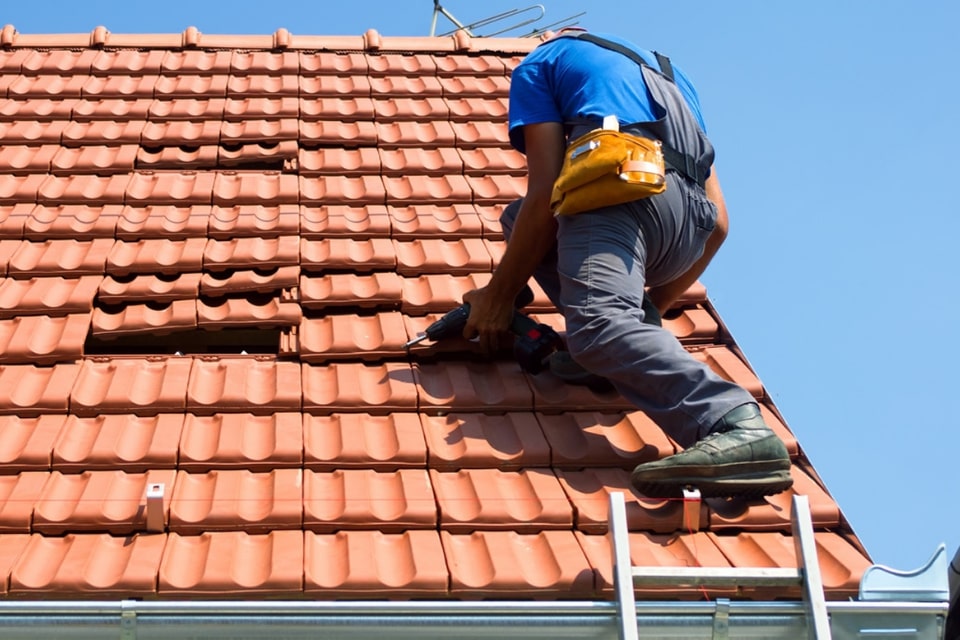How Much Does it Cost to Repair a Shed Roof?
Shed roofs are available in a wide range of shapes, sizes, and materials.
Whatever the differences are...
Regardless of the different types of shed roofs, they all have certain features in common that have evolved over many thousands of years to keep the interiors dry and warm.
Due to the style of a roof, its construction principles, and the types of roofing materials can vary, so can the cost of a roof replacement, which can be significant in some cases.
Fortunately, if the repair or maintenance work requires the removal of tiles or slates, these can often be safely stored and reused with only minor breakages.
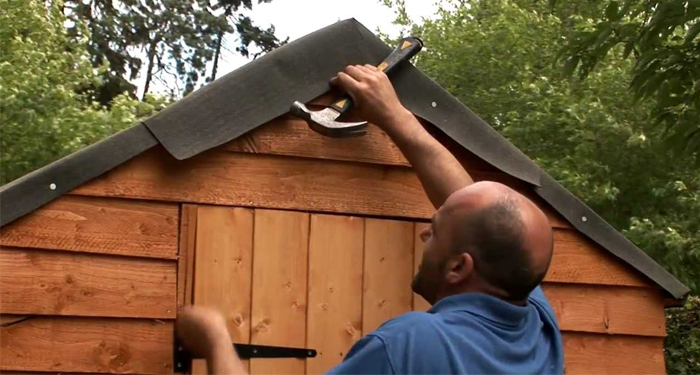
Here we will go through the different costs to repair a shed roof, including the labour, supply and additional costs, the duration of the repair and the different types of repairs available.
Depending on the type of roof you have on your shed will affect the overall cost of the repair. Some sheds have different materials that are used depending on what they use their shed for.
Repair a Tile
In the most basic cases, you may have a missing or damaged roof tile that allows water to enter your shed. If this is the case, a roofer can replace a handful of cement, clay, or slate tiles for around £200, and it can be done relatively quickly, typically in a few hours.
Repairing a tiled roof will help to prevent leaks caused by slipped roof tiles. The cost of replacing roof felt beneath tiles will be incorporated into the overall tiled shed roof repair costs.
Flat Roof Repairs
Basic felt solutions cost around £50 per square metre, with higher-end materials such as modern GRP (a type of fibreglass) costing up to £90 per square metre.
Labour costs may then range between £150 and £250 per day per worker. In general, we would expect a flat roof replacement for a typical shed to cost between £1,000 and £2,000.
Flashing Repair Costs
Lead flashing protects the edge of your roof where tiles meet brickwork. If this is damaged for any reason, it can cause the same problems as missing tiles, allowing rain into your shed.
Repairing damaged flashing should cost about the same as replacing missing tiles - replacing a metre or so of flashing should cost between £100 and £250.
Sagging Shed Roof Repair
Sagging roof repair costs vary; if extra weight is the issue, additional joists or rafters can be added to shore up the extra weight, which can cost between £1,000 and £2,000 depending on the number required.
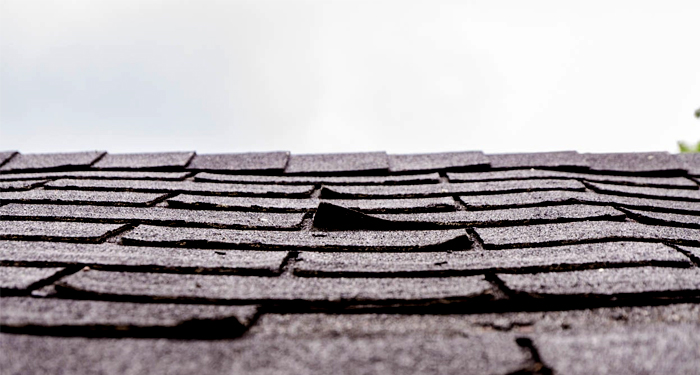
Is your shed roof beyond repair?
When a roof sags as a result of water damage, the internal structure is irreparably damaged. If this is the case, the entire roof must be replaced, which can cost between £5,000 and £12,000, depending on the size of the property.
Shed Roof Repair Prices
The table below will break down the costs to have your shed roof repaired.
| Type of Shed Roof Repair | Cost |
|---|---|
| Repair a tile | £200 |
| Flat shed roof repair | £1,000 - £2,000 |
| Flashing repair | £100 - £250 |
| Sagging shed roof repair | £1,000 - £12,000 |
| Felt repair | £200 - £500 |
The type and size of the shed, the number of tradespeople hired, ease of access, and the location of your property are all cost-influencing factors when hiring someone to repair a shed roof.
The location can have a significant impact on your overall cost. Prices in the southeast of England (particularly London) will be higher than the national average in most areas.
The opposite is true in areas such as the north of England, Scotland, and Northern Ireland.
What Are The Supply Costs of Repairing a Shed Roof?
Unlike our homes, which are frequently cared for and attended to, the shed at the back of your garden is often overlooked.
A shed's roof can deteriorate if left to the elements and the ravages of time. If left unattended, it could even become dangerous – and costly to repair!
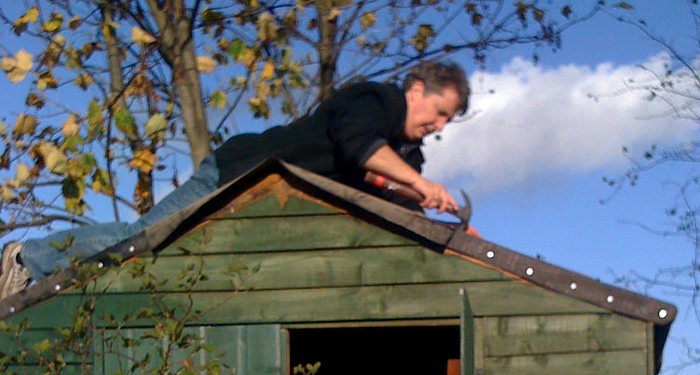
Numerous issues necessitate the repair of our sheds. Sagging, exposed timber/aged Roofs, and leaks are all popular issues that shed carry. So, if you want to do your repair, we'll go over the supplies you'll need to fix your shed roof here.
When a torn or damaged shed roof is left alone, it can allow water in, causing damage not only to the shed but also to anything left inside. Fortunately, these tears can be repaired quickly and easily with a few simple tools.
You will require: A hammer will cost you £3 - £10, a tape measure will cost you £9 - £30 depending on the type you want, a screwdriver will cost you £7 - £13.
A utility knife will cost you £1 - £3, tacks will cost you £1 - £3, a ladder will cost you £30 - £50, and of course, some new roofing felt suitable for your shed roof will cost you £20 - £30 per m2.
If your roof is sagging, you will need new rafters, especially if your existing ones have been damaged by water ingress, which will cost you £17 - £30, as well as installing new purlins.
Purlins will cost you £15 - £50 depending on how much you need, struts, and angle brackets are all good options.
When repairing your shed roof DIY, it is important to keep in mind the better the quality, the longer it will last, so although it is cheaper to get low-quality materials, it will not last as long.
The table below will break down the supply costs you will need to repair your shed roof.
| Materials | Cost |
|---|---|
| Hammer | £3 - £10 |
| Tape measure | £9 - £30 |
| Screwdriver | £7 - £13 |
| Utility knife | £1 - £3 |
| Tacks | £1 - £3 |
| Ladder | £30 - £50 |
| Roofing felt | £20 - £30 per m2 |
| Rafters | £17 - £30 |
| Purlins | £15 - £50 |
What Are The Additional Costs For A Shed Roof?
When it comes to having your roof repaired, additional costs might pop up and add to your overall cost.
To prevent this from happening, here we will go through the different additional costs for a shed roof, so you know what to expect when it comes to having your shed roof repaired.
Garden Shed
If your shed roof is slowly breaking down and needs a few repairs, you might decide you want to have a new garden shed installed in your home. But how much does it cost to have a garden shed installed?
The cost of building a shed will vary depending on where you live, the materials you choose, and the size of the shed.
A wooden shed costs between £500 and £1200 on average, while a metal shed costs around £450. Installing a typical-sized plastic shed will likely cost between £285 and £700.
The installation of a 6-foot x 4-foot shed will likely cost around £500 to £700, an 8-foot x 6-foot shed will likely cost around £700 to £900, and a 12-foot x 8-foot shed will likely cost around £1000 to £1200.
Smaller sheds may cost less than £300 to have installed, whereas larger sheds may cost more than £2,000 to have installed.
The labour costs for installing a wooden shed will most likely range between £260 and £300.
The same cost for a metal shed could range between £60 and £140. Smaller metal and plastic sheds, on the other hand, may take 1 to 2 hours to install.
The labour costs for these installations could be as low as £20 to £50. The labour costs for a 6-foot x 4-foot shed will range between £175 and £250.
The length of time it takes to install a shed is determined by the size and type of shed. The ease of access to your garden is another factor that may influence the time it takes to install a shed.
Please refer to our guide on shed installation costs, for further information.
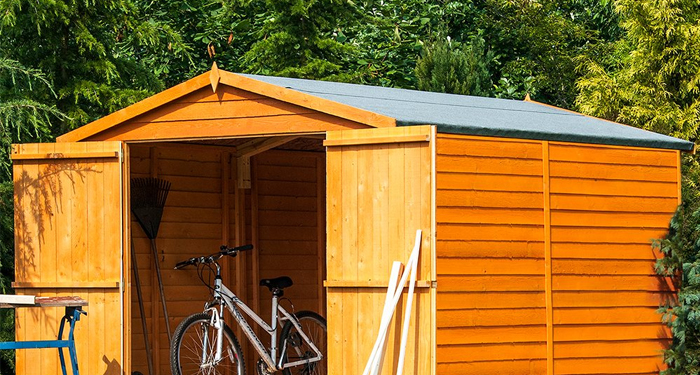
Roof Tile Repair
When you are having your shed roof repaired, you might decide to save time and get your roof repaired also. The average cost of roof tile repair varies depending on the type of repair required.
For example, repairing slipped or broken tiles will cost between £170 and £500, while re-cementing ridge tiles will cost between £150 and £600.
Other roof tile repairs include installing a dry ridge system to repair tiles, which costs between £750 and £950 and repairing valley tiles, which typically costs between £350 and £450.
For minor roof repairs, roofing specialists typically charge between £150 and £250 per day or between £15 and £25 an hour.
Dry ridge repairs typically cost between £150 and £250 in labour, while valley tile repairs cost between £200 and £300.
Roofers typically repair broken roof tiles in two to five hours, while re-cementing ridge tiles can take two to three hours. Repairing a roof valley can take four to six hours for a tradesman, while dry ridge repairs can take up to two days.
If your roof tiles cannot be repaired, you may have to have them removed. Roof tile removal typically costs between £150 and £500 for one to two days of work.
You must also consider the cost of waste disposal, which can range from £60 to £300, to hire a skip for your unwanted roof tiles.
Please refer to our guide on roof tile repair costs, for further information.
Guttering
You may also decide you want to clean your gutters or have new ones fitted on either your shed or your home. The total cost of guttering varies according to the material used and/or the size of the area covered.
Covering a semi-detached house with 15 to 20 metres of guttering will cost approximately £600 to £900 in steel, £675 to £900 in aluminium, £675 to £1000 in uPVC, £1200 to £1500 in cast iron, or £540 to £1100 in copper.
Fitting PVC guttering to a terraced house will cost around £400 to £500, £400 to £500 for a semi-detached house, £500 to £700 for a detached house, £400 to £550 for a bungalow, £240 to £360 for a flat, or £325 to £350 for a garage or shed.
The average labour cost for installing guttering on the house is around £200 to £300. This is the same as the average daily rate charged by most guttering installers, with the task of installing guttering on the house taking approximately one day.
Installing guttering on a shed or garage may take less time and thus be less expensive than the above figure. A guttering installer's hourly rate is typically between £18 and £25.
The time it takes to install guttering depends on the type of guttering, the ease of access to your house's roof, and the condition of your house's roof.
However, you may choose to have your guttering removed if your roof is being replaced or if you want new guttering installed, either because your current guttering is worn beyond repair or because you prefer a different type of guttering.
The removal of old guttering will most likely cost between £100 and £150 in labour. Waste and old guttering can be disposed of using a skip or alternative services such as a 'man and van service.
Please refer to our guide on guttering costs, for further information.
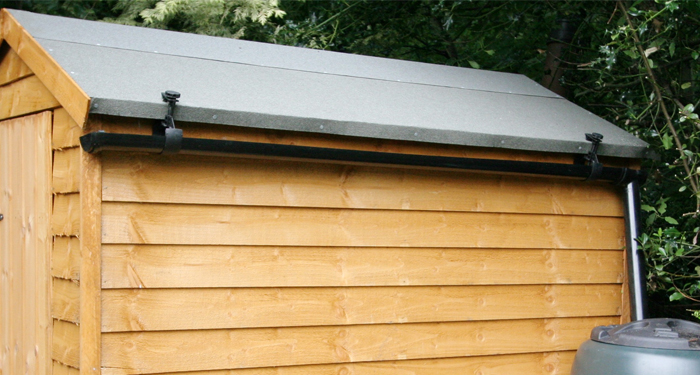
Soffits and Fascias
You might decide you want to have your soffits and fascias replaced on your house or shed. The cost of fascia and soffit replacement varies depending on the size of your home, but the average cost is between £1000 and £4600.
In terms of labour costs, replacing fascias and soffits on a terraced house will likely cost between £230 and £300.
The labour costs for a semi-detached house are likely to range between £400 and £520.
The labour/installation costs for a small detached house will be around £600 to £720, £800 to £880 for a medium detached house, and £930 to £1040 for a large detached house.
The labour costs for a garage should be around £160 to £230, a small porch around £50 to £70, and a shed around £80 to £100.
A shed will usually take under a day to complete. However, the length of time it takes to complete such replacement work can vary depending on factors such as the size of the house, the type of house, the ease of access to the soffits and fascias, and the type of soffits and fascias you want installing.
However, if you do not want to have new ones installed then having your old ones repaired is also an option. Sealing fascia gaps in the roof typically takes 2-4 hours of work, with costs ranging between £75 and £310.
The cost varies greatly because it is largely determined by the type of fascia material used and the length of time required to complete the task.
To repair rotted soffits and fascias, a small replacement job is required. The fascia will be reattached after the new soffit is installed.
Assuming a small job with few new materials, you'll probably spend between £60 and £150 for labour and materials, plus 2-4 hours of work.
You can choose to have your soffits and fascias removed and replaced. This may be done because the old soffits and fascias are too damaged to repair, or because the homeowner wishes to install new soffits and fascias made of a different material.
The labour costs for removing soffits and fascias will likely range between £20 and £26 per hour, with a minimum two-hour flat charge. The removal costs could range between £50 and £200.
Please refer to our guide on soffits and fascias costs, for further information.
New Roof
Having your shed's roof repaired may lead you into wanting to install a new roof on your home, which comes with a cost. The average cost of roofing for home ranges between £5,000 and £6,000.
The cost of a garage ranges between £1,000 and £2,000. The price will be determined by the type of roof you want installing on your new shed or home.
A gable roof is a popular roof type that necessitates a significant amount of material and expertise. The installation of these roofs typically costs between £2,000 and £4,500.
A flat roof is another popular option; these roofs necessitate the use of waterproofing systems as well as other materials such as bitumen and felt. The cost of constructing a new flat roof can range from £1,500 to £3,000.
This shows that the overall cost of a new roof is massively affected by the type of roof you choose to have for your home.
Some tradesmen have more experience than others, and as a result, they can charge more. The typical price range for roofing labour is between £150 and £300 per square.
The duration for roofing ranges from 24 hours to three days. In some extreme cases, such as non-residential buildings, the three-day deadline is exceeded and the project may take a week to complete.
The number of days required for roofing will be determined primarily by the size of your building.
The larger the building, the larger the roofing surface area and the number of people involved in the roofing process can all have an impact on how quickly or slowly your roofing process goes.
Please refer to our guide on the costs of installing a new roof, for further information.
Tradesman Costs for Repairing a Shed Roof
Repairing a shed roof is not a good do-it-yourself project for everyone.
Along with the safety concerns associated with roof replacement or structural repairs, such as fall hazards and working near power lines, this work requires the use of power and pneumatic tools that some homeowners may not have or understand how to use.
If the foundation is concrete, you will need a professional to break it up and prepare the soil to pour a new foundation while preserving the structure's integrity.
A local roof repair professional can tell you whether your roof needs to be repaired or replaced.
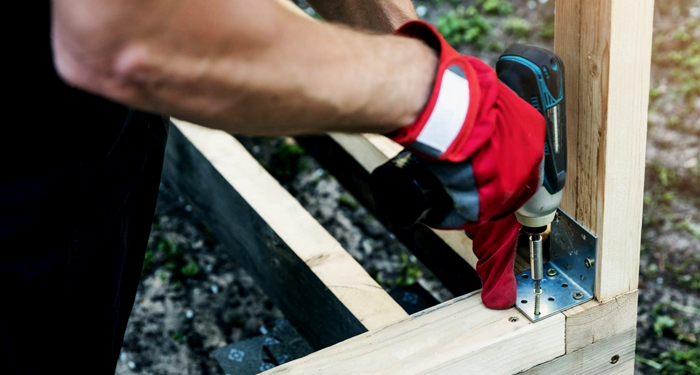
In this section, we will go over the various labour costs of having your roof repaired by a professional.
Roofers typically charge based on the type of job they're doing, rather than the time it will take - whether it's a simple repair, replacing elements like flashing or building a completely new roof.
A roofer's hourly rate is typically around £21.50 per hour. The exact price you pay will be determined by the individual roofer, their experience, and the specifics of the work you require.
It is recommended that you speak with local roofers and ask for a breakdown of their costs to get accurate prices in your area.
Once a tradesman has inspected the work, they should explain the problem in detail and show you detailed photos.
This is especially important with roofing issues because the homeowner is unlikely to have been able to assess the affected area themselves due to safety and accessibility concerns.
If you can see photos and ask detailed questions about them, you're much less likely to be duped into thinking something is a bigger (and more expensive) job than it is. You should then be given an estimate for the cost of your shed roof repair.
Numerous factors can influence the cost of hiring a roofer, including where you live, which will influence how much you pay for a roofer as well as equipment such as skips and scaffolding.
If you live in London or the surrounding areas, you can add 10% to 20% to any of the average prices we've quoted.
It is always beneficial to obtain a personal recommendation. Inquire with family, coworkers, and friends if they have recently had work done on their roofs.
Someone in your social circle may be happy to recommend someone they have used in the past or who they know personally.
How Long Does It Take To Repair a Shed Roof?
The length of time it takes to complete the work may or may not affect the overall cost, and it will ultimately depend on how the tradesperson works.
In some cases, a contractor will be paid a fixed amount from the offset, whereas in others, they may be paid by the hour. In this section, we will go over the various timeframes for repairing your shed roof.
Roofers, for example, typically take two to five hours to repair broken roof tiles, while re-cementing ridge tiles can take two to three hours.
Repairing a roof valley can take four to six hours for a tradesman, while dry ridge repairs can take up to two days. The duration may vary depending on the size of your shed and the number of broken tiles.
It's important to keep the roofer's schedule in mind. If there has been a storm in your area, they may be unable to begin your project right away due to the large number of customers who require the same services.
It will also take some time to review the quotes and choose the best company. After you sign the contract, it will be a few days before the roofers can begin work on your project.
If the leak is minor, it can be repaired in two hours. Some roofs require more time to repair than others. Tile roofs, for example, take longer to install than shingle roofs.
Types of Shed Roof Repairs
There are many types of shed roof repairs that all have different methods of repairing.
Here, we will go through the different types of shed roof repairs and their pros and cons so you get to understand which roof repair will suit your shed more.
Damaged Shingles or Underlayment
If your shingles or underlayment is damaged, you'll probably notice it when you're in your shed. When you look up, you'll notice a drip or a noticeable stain on the sheathing.
Repairing a damaged underlayment is often as simple as repairing a hole or ripped shingle or another outer layer of roofing material. This usually does not necessitate a complete roof teardown.
If the leak has been present for a long time, you may also need to replace the sheathing beneath.
Pros
- Simple repair
- Easy to notice
Cons
- If it has been left for too long can result in roof teardown
Roof Sheathing or Plywood Repair
You don't want either the standard OSB roof sheathing or the plywood to be exposed to moisture.
A hole in your roofing material or a leak at the edge of a roof vent will damage the sheathing beneath, but not always to the point where it must be replaced.
Sheathing and plywood can both withstand some moisture penetration before needing to be replaced.
You can see the extent of the damage by removing the outer roofing material and underlayment from above. If the OSB or plywood is soft, it must be removed.
Also, if there is visible sagging on your roof, particularly between the rafters, your sheathing is deteriorating and it is time to replace it; no inspection is required.
If you need to replace a section of plywood, you must remove all of the material on that piece. For most sheds, this entails removing some or all of the roof. Depending on the material of your roof, it may be simpler to remove and replace the entire roof.
Pros
- Affordable
- Simple job
Cons
- Can lead to further issues
Rafter Repair
If you leave a leak for a long time, not only will the OSB need to be replaced, but so will your roof rafters. In this case, it is not always necessary to replace the entire roof. You must first repair the sheathing, as described above.
When it comes to repairing the rafter, you may be able to simply sister it with the existing damaged rafter.
This entails cutting it to the exact dimensions of the other rafters, then affixing it so that it butts up against the damaged rafter. Of course, make certain that the rafter is securely fastened to the shed and not the damaged rafter!
If you have more than one damaged rafter, a shed roof teardown is most likely in your future. A visual inspection of your shed roof regularly is always a good idea – simply walk into your shed and look up!
Keep an eye out from above as well – you should inspect the top of your shed at least once a season to ensure a shingle hasn't flown off or a screw has become dislodged.
Pros
- Can see the issue easily
Cons
- Expensive
- Hard to repair
Felt Shed Repair
Because it is inexpensive, bituminous shed felt is used in the majority of UK sheds. However, shed felt doesn't last very long, only 3-5 years for the cheapest variety, and you often don't realise it's leaking until it's too late.
This indicates that the roof deck and timbers may have begun to rot, and the contents of the shed may have become water damaged.
The most commonly used material for a shed repair to this type of roof is EPDM (Ethylene Propylene Diene Methylene), which is an artificial rubber. It is tough, stretchy, and long-lasting.
EPDM is supplied as a single sheet cut to the size of your shed, ensuring that there are no nail holes or lap joints that could lead to leaks.
EPDM is slightly more expensive than standard roofing, but when you consider the cost over its potential 30+ year life, the labour savings of not having to repeatedly re-cover your shed roof, and the reduced damage to the contents of your shed, it works out much cheaper.
Pros
- Cheap to buy
Cons
- Not durable
FAQs
Q: How do you waterproof a shed roof?
A: Aside from the type of shed roof covering you choose, perhaps the most important factor in determining how waterproof your shed roof will be is proper installation.
The substrate should be properly fitted and applied, and the roof should fit the inside of the shed just as well as the outside.
If you have a large garden shed, you should think about installing a gutter. This ensures that any rainwater is safely transported away from the roof.
Q: What is the most durable shed roof?
A: Metal roof tiles are the most durable material for a shed roof, they are guaranteed to last around 40 years. They have a steel core that protects the shed roof in all different types of weather conditions.
Q: How long does a felt roof last?
A: A felt roof is a highly durable type of felt with a life expectancy of up to 5 years.
This may vary depending on the type of felt, but the average life expectancy is 5 years. It can last for a longer period depending on how well it is maintained.
Q: What can cause a leak?
A: Roof leaks are the most common reason for roof repairs or replacements.
- Roof tiles that have been damaged or cracked.
- Lead flashing that has been damaged or cracked.
- The roof valley has been damaged.
- Ridge tiles with cracks
- Verge tile loose mortar.
All of this is due to weathering from frost, snow, wind, and rain. Some are even the result of pests like birds and insects.
Q: How Can I Save Money?
A: One of the most effective methods is to hire dependable tradespeople who can accurately assess the scope of the job and complete it professionally and on time.
While buying new tiles is the simplest way to ensure they are suitable for your project, you can also save money by buying used tiles, though you must be certain that they meet your specifications.
If you are not changing the style of your roof, you may be able to reuse some of the tiles on your property.

